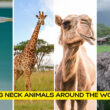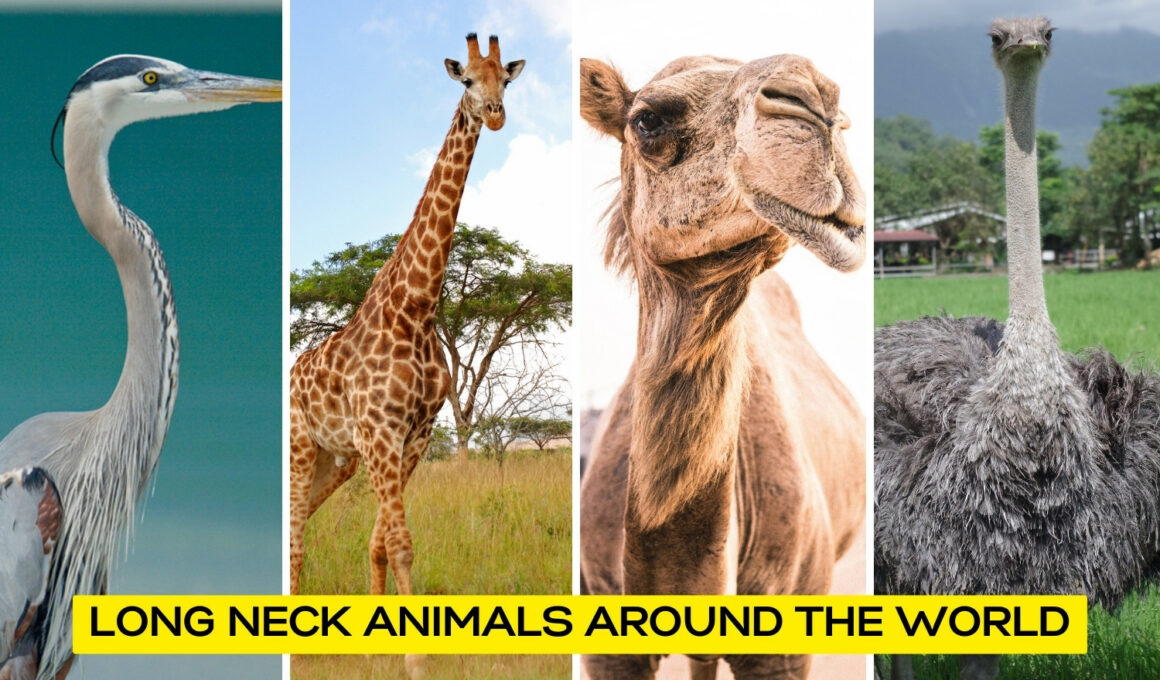Table of Contents Show
As an animal enthusiast, you may sometimes wonder what the 20 long-neck animals in the world are. Imagine not having to stretch so much to peer around, intriguing right? That’s typically how these animals live. Several theories have emerged as to how these animals evolved and advanced in these ways.
One theory points to survival as these animals with long necks have some leverage over those that do not. They have a higher look at their surroundings which makes it easy for them to sight danger in good time. And this may not be the only advantage their long necks offer.
These animals include Giraffes, Camels, Gerenuk, Emu, Ostrich, Anhinga, Rhea, Black Swans, Llamas, Flamingo, Egret, Horses, Alpacas, Snake-necked Turtle, Zebra, and Scarlet Ibis, Okapi, King Vulture, Komodo Dragon, Herons and more.
| Animal | Fun Fact |
|---|---|
| Giraffe | Giraffes have the same number of neck vertebrae as humans—just seven. However, each one can be up to 10 inches long! |
| Ostrich | The ostrich has the longest neck of any bird species. It uses its long neck to scan its surroundings for predators, yet interestingly, it has a relatively small head and brain. |
| Flamingo | Flamingos can often be seen with their necks bent in an “S” shape. This is not just a rest posture, but also helps them to filter feed by efficiently scooping up water and mud. |
| Swan | The long neck of a swan, which can have up to 25 vertebrae, helps it to forage for food underwater while keeping its body floating on the surface. |
| Okapi | While not as long as a giraffe’s, an okapi’s neck is still impressively long. An interesting fact is that okapis are the only known living relative of the giraffe. |
| Emu | Emus have long necks but unlike most birds, they do not have a crop – an expanded, muscular pouch near the throat where food can be stored before it is digested. |
| Alpaca | Alpacas have relatively long necks for their size. They often spit when threatened, and their long neck helps them to accurately aim at their target! |
| Camels (Dromedary and Bactrian) | A camel’s long neck helps it to reach leaves and branches up to three meters high. The humps on their backs, not their necks, store fat, which they can convert into water and energy. |
| Llama | Like alpacas, llamas also have long necks. They use their necks during “neck wrestling”, a common way males establish dominance. |
| Crane | Cranes are known for their long necks and legs. They use their long necks for foraging in the water and for complex mating dances. |
| Heron | Herons often draw their necks back into an “S” shape to be more aerodynamic during flight, and then strike out quickly to catch prey while hunting. |
| Goose | Geese have long necks that help them forage for food both on land and in water. During flight, their necks extend out, leading their bodies. |
| Vulture (e.g., Turkey vulture) | Vultures use their long necks to reach into carcasses without dirtying their feathers. It’s a helpful adaptation for these scavengers. |
| Nandu (Greater Rhea) | These large flightless birds have long necks, which they use for balance during their fast, agile runs. |
| Shoebill | This bird’s neck is relatively long, helping to balance out its large, shoe-shaped bill. A fun fact: despite their large size, shoebills are known to stand incredibly still, often for hours at a time. |
| Secretary Bird | Despite being a bird of prey, the Secretary bird has a long, crane-like neck. It is also one of the few birds of prey that hunt on foot. |
| Anhinga (Snakebird) | These birds have incredibly long, thin necks, which often snake out of the water while the rest of their body is submerged, leading to their nickname “snakebird.” |
So if you are quite curious about these animals with long necks this article is certainly for you, read on as we will be familiarizing you with these wonderful long-necked animals around the world.
22 Animals With Long Necks
Here’s a list of the most popular animals with long necks.
1. Giraffes
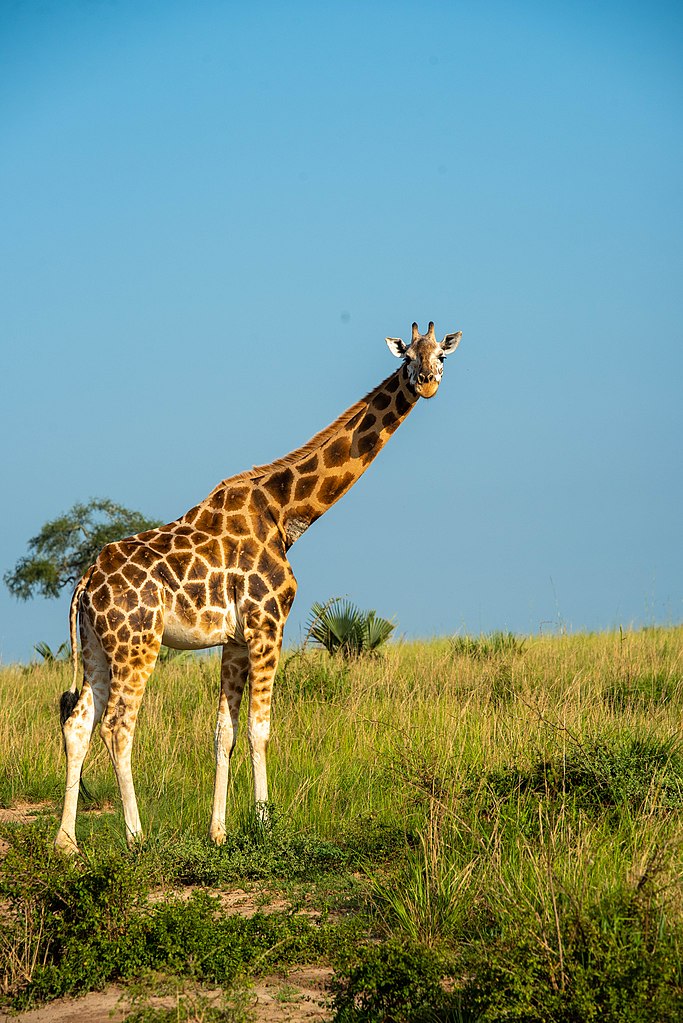
This animal is top of the list for a reason, they are the tallest animal on land and also hold the trophy as the animal with the longest neck. You have probably seen them munching on grass either on your screen or in the zoo, well that’s because they are strictly herbivores.
A giraffe’s average neck length ranges from 7-8 feet and the overall height of an adult giraffe is 18 feet (500-600cm). Their long necks help them reach trees that would normally be out of reach for other animals which is an advantage, especially in droughts when grasses and plants are scarce.
It may look weird when giraffes are drinking water, their legs are bent almost to their knees, this however is the downside of possessing extremely long necks. In this position, giraffes are very vulnerable to attacks from predators.
Furthermore, male giraffes use their long necks as weapons when fighting another male for dominance. Usually, the giraffe with the weaker neck loses, and the champion gets to mate with the female they were trying to impress with their strengths.
2. Camels

The list may not be complete without camels, camels are unique with their pronounced curved long necks and hump on their backs that keep them cool in hot conditions. These easy-going animals are herbivores as well. Camels are about 6-8 feet above the ground, so their long necks are necessary for grazing as most of their preferred meals are ground vegetation.
Camels can stay weeks or even months without food or water, when there is a famine the sac that stores fatty tissues in their hump starts distributing the fat thereby sustaining the camel for a very long time. this is why they are mostly used as a means of transportation in deserts.
There is a misconception that their humps serve as a storage tank for water but as a matter of fact, it stores fatty tissues. Camels are very popular animals in North Africa, Mongolia, the Gobi desert of China, and many Arab countries.
3. Ostriches

You honestly don’t want to piss off an ostrich, these flightless birds are mostly found in Africa and some regions in the Middle East. Their long necks make it easy for them to reach out to meals that may be a distance away from them.
More so it also helps them spot danger close by in time. Ostriches are very unique birds, they easily feel threatened and attack with their powerful legs which often leads to the death of the offender. These 6-9 feet tall birds can produce15 cm-long eggs.
4. Gerenuks
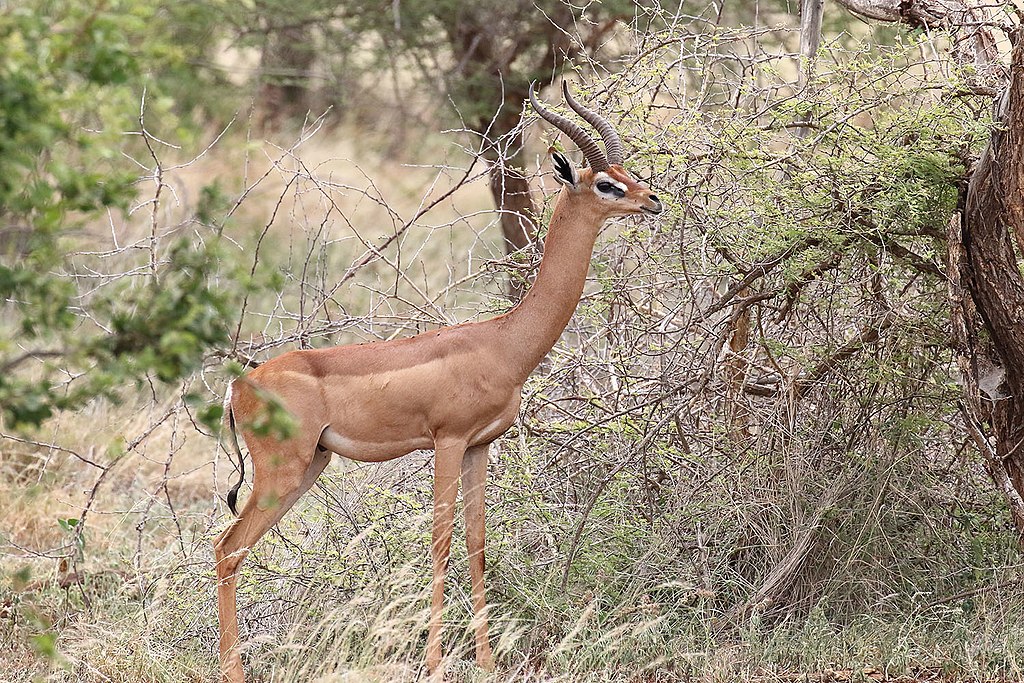
Also known as giraffe gazelle, Gerenuks are commonly found in some African countries such as Kenya, Tanzania, Somalia, and Ethiopia. They are mostly the unfortunate animals on the food chain but their long necks and slender legs that facilitate them to run fast, and give them a higher chance of surviving in the wild full of predators.
Their necks are 7-10 inches long and their overall body height is 3 to 5 feet, in captivity gerenuk can live up to 12 years but their lifespan decrease to a maximum of 8 years in the wild.
5. Rheas
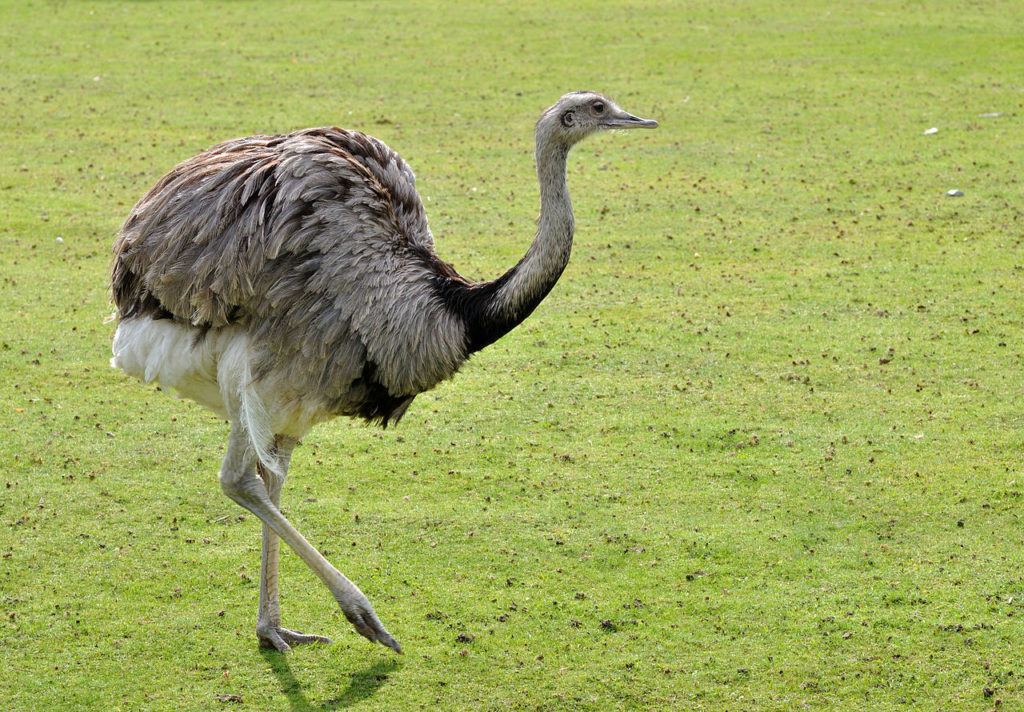
These are big south American birds, in drought seasons their long necks help them eat from high trees. Rhea also known as American rhea or gray rhea are flightless birds. They can be found in Argentina, Brazil, Uruguay, and Bolivia.
They are slightly related to ostriches and emu. Greater Rheas as many would prefer to call them can eat plants, grasses, and fruits they also don’t mind munching on insects, lizards, and smaller birds. These birds are super friendly and would run away from danger in a zigzag format.
6. Emus
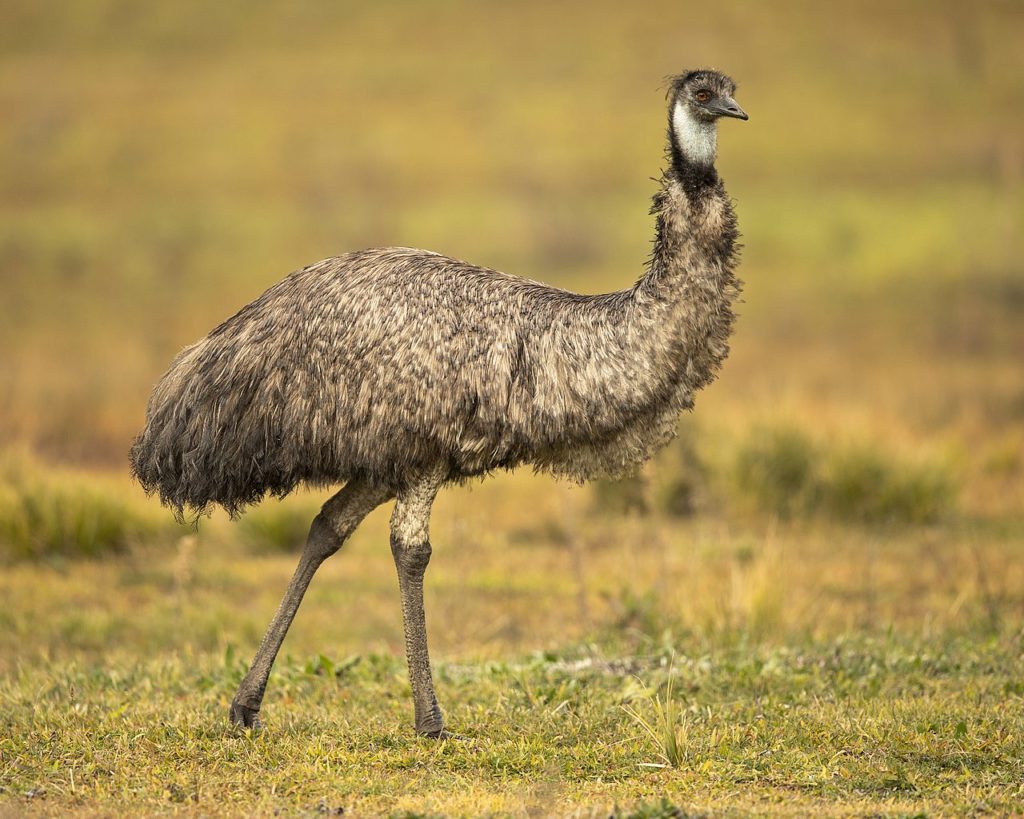
Emus are giant birds, they rank as the second-largest bird in the world after the ostrich. They first lived in Australia after which they are seen in a lot of zoos across the country. These birds have long necks that can help them foresee potential threats hiding in the bush.
Their bodies are covered in soft feathers that keep them warm in cold weather. These big birds are extremely dangerous when they ay are angry, they can attack with their legs and beaks and can inflict serious injuries.
7. Black Swans
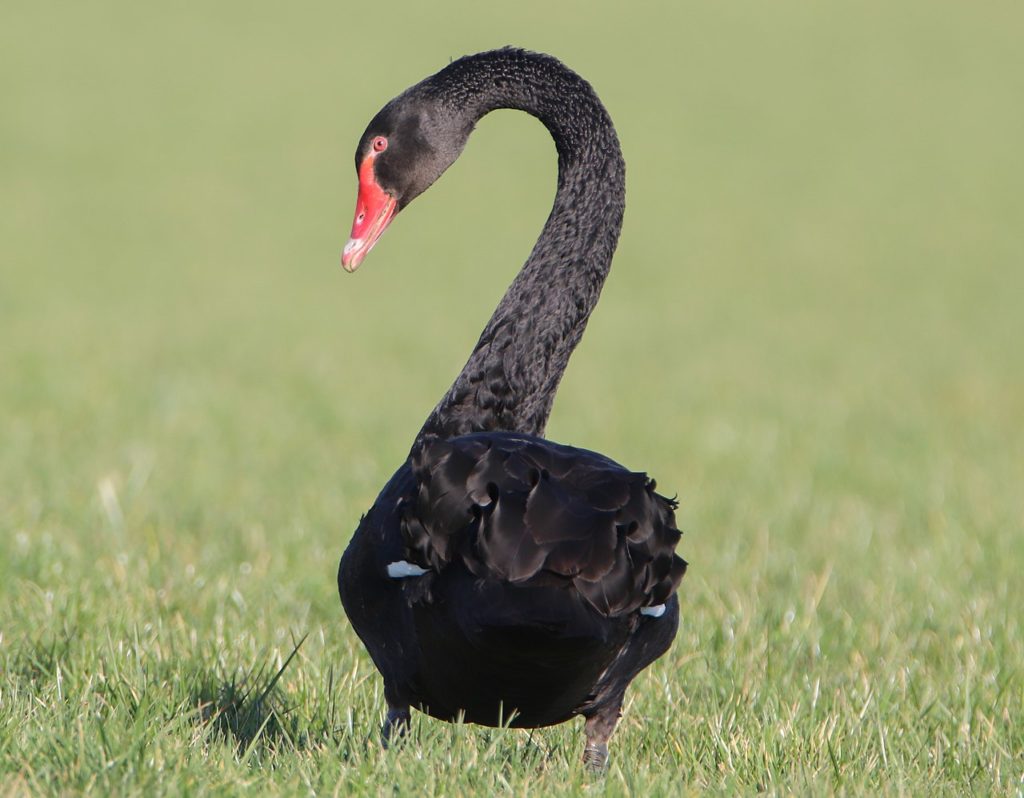
Black swans precisely have the longest necks of all other swans. When agitated they elongate their necks and spread their wings to send a message to intruders to back off.
Swans are water birds mostly found in New Zealand and Australia. Their long, curved necks help them successfully hunt for fish and other vegetation under water which is their major source of food.
8. Llamas
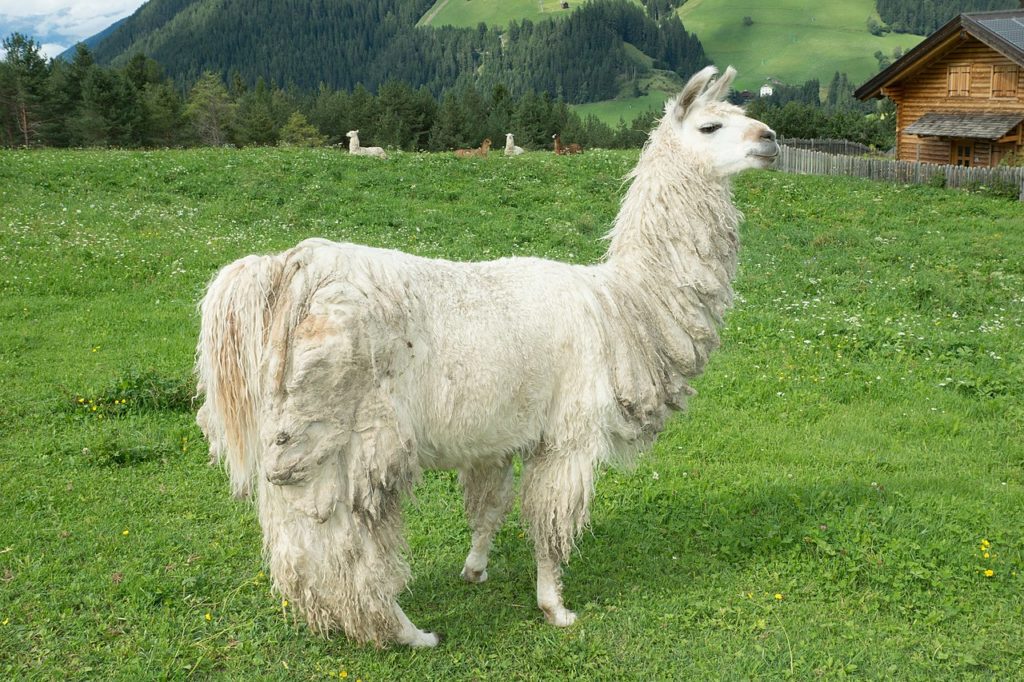
They look almost like camels but the shorter version. They are scattered around the world but are most dominant in North America, Europe, and Australia. They are herbivores and you never see a lone llama as they prefer to live in a herd. Their necks are long and it makes it easier for them to graze.
Llamas can be differentiated from alpacas by their height and weight, they are usually bigger than alpacas and can show aggression by spitting when agitated. Llamas are bold animals that can protect smaller livestock from predators like coyotes.
9. Flamingos
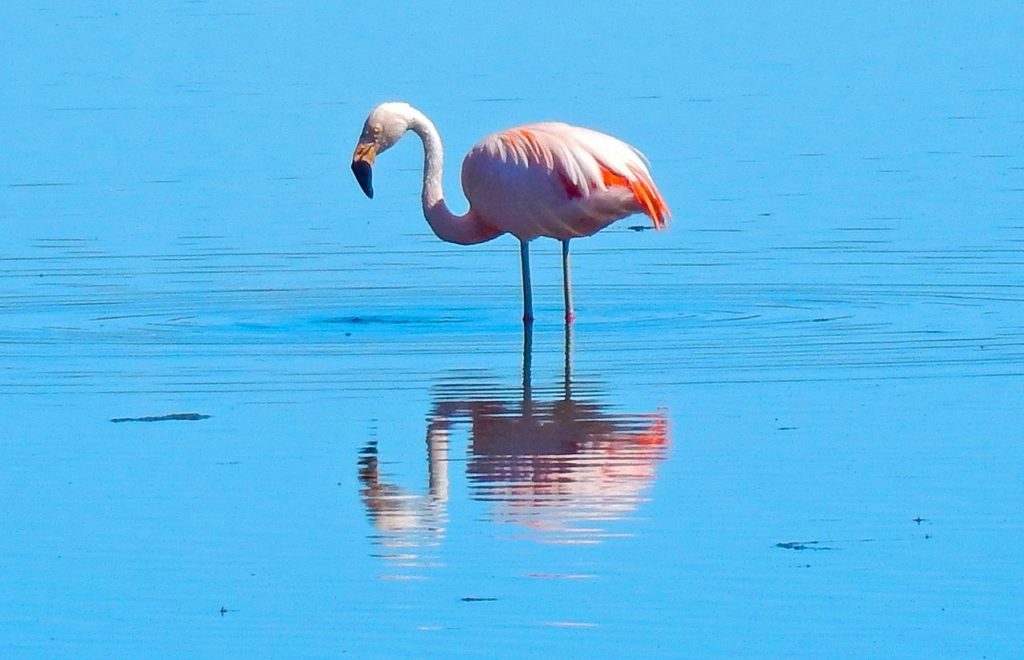
Flamingos love the water, these tropical birds use their long necks to catch their prey. Their necks are very flexible and are an excellent adaptation for their long legs. Flamingo’s long necks can turn upside down to filter the water and hunt for food.
Mature flamingoes can stand as tall as 4-5 feet, they are commonly found in the West Indies, South America, and Yucatan.
10. Great Egrets
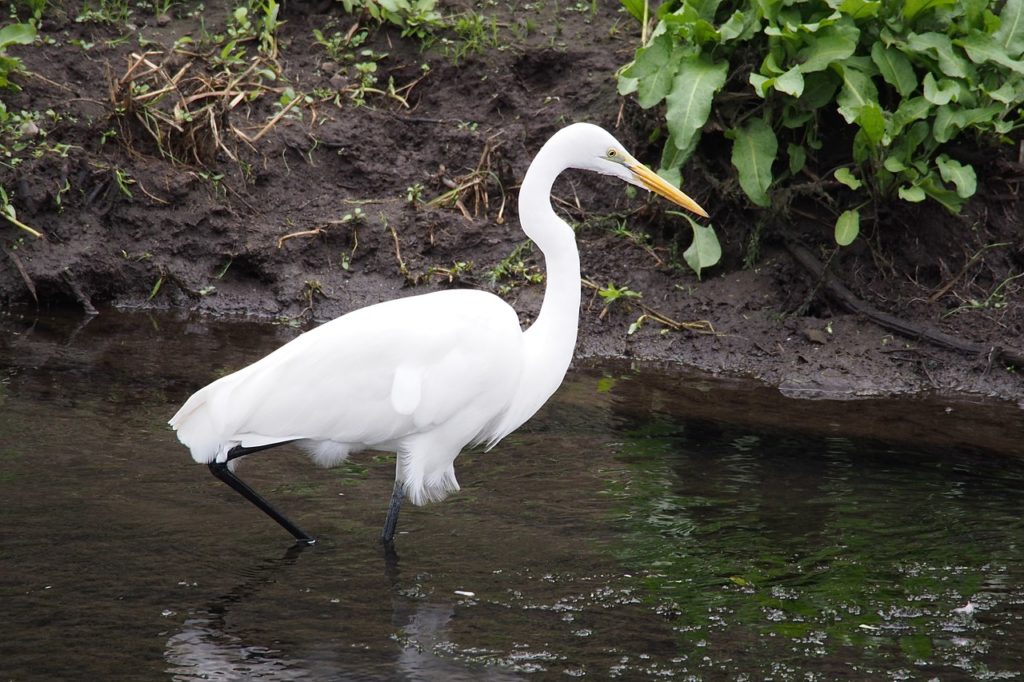
Egrets are beautiful birds with S-shaped long necks. Predominantly a white-colored bird, egrets use their long necks to hunt. They live close to swamps, rivers, and wetlands as a whole because their main food source is aquatic animals.
Great egrets are related to herons and they are mostly 3.5 feet tall.
11. Anhingas
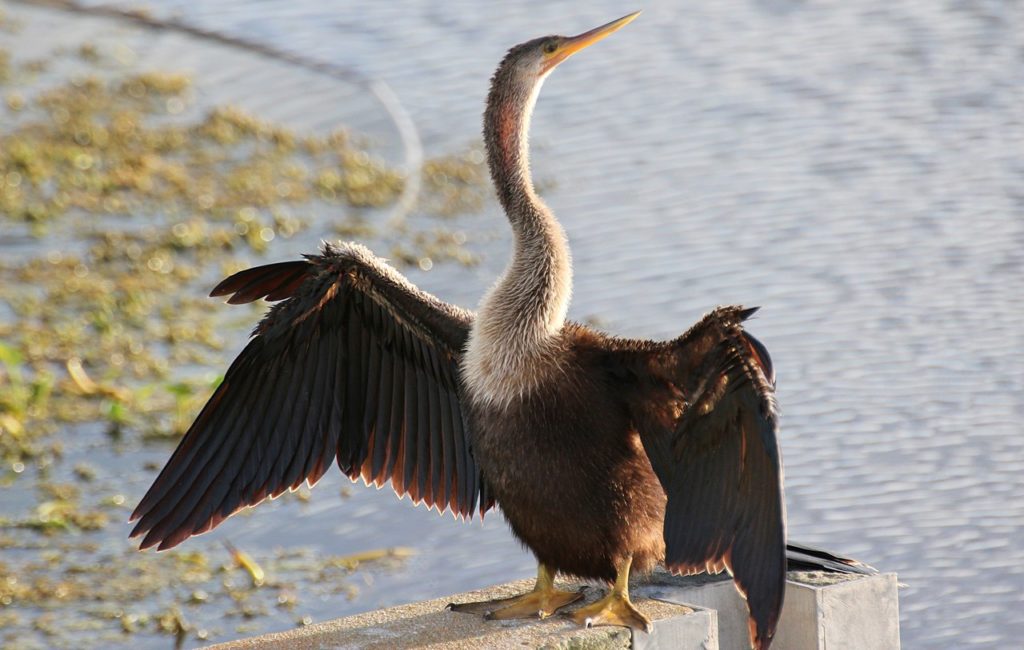
Many know these birds as snake birds or devil birds. Anhinga wetland birds as they stay around rivers, marshes, and saltwater. They have long necks with incredibly sharp beaks they use to strike their prey which usually consists of insects, fishes, water snakes, crayfish, and shrimps.
12. Horses
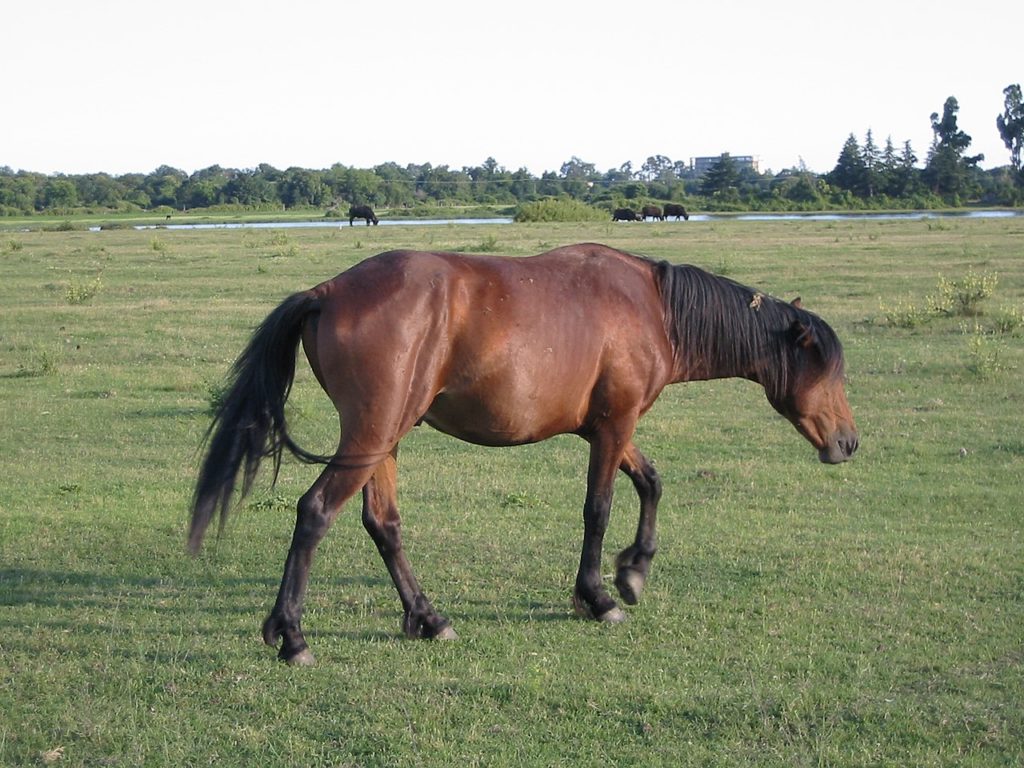
It’s no news that horses have long necks which suit them as it helps balance their weight for stamina whilst running. Their long necks also help them graze better and give them a better chance of survival. Horses are herbivores for this reason they will prefer to inhabit grasslands.
In ancient times, horses were used as a means of transportation, their legs can are fast and their necks help to keep them steady.
13. Zebras
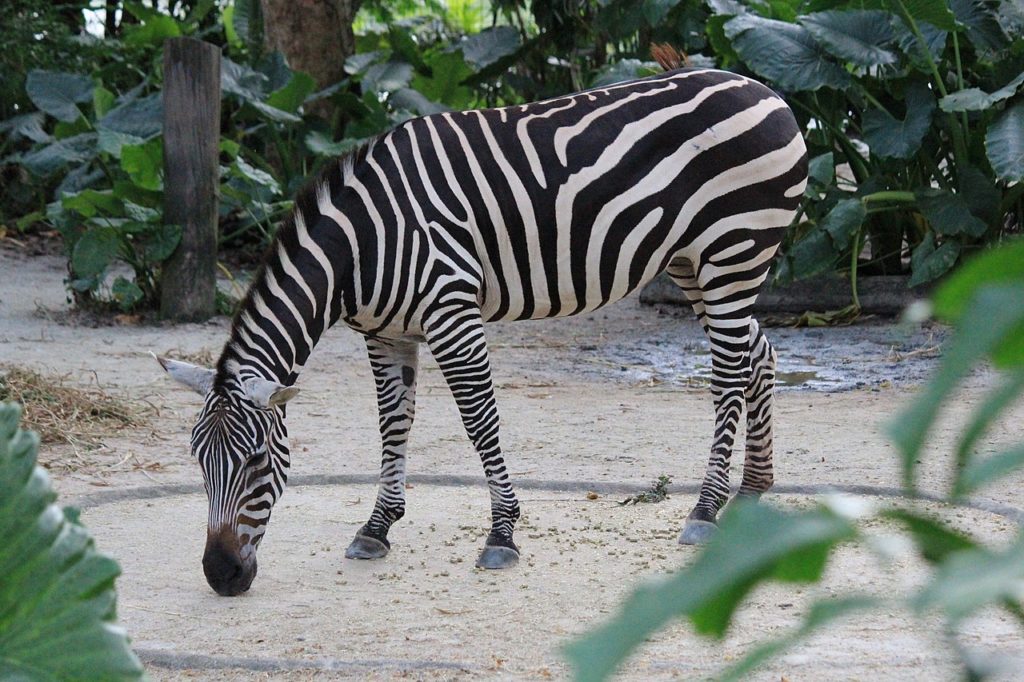
Zebras have a slight resemblance to horses, unique for their white and black stripes. They are herbivores, so their long necks enable them to reach up to plants below and above to feed on. It is believed that zebras’ color helps to camouflage them from predators.
These grazers prefer to stick together as this gives them a better shot at surviving in the wild.
14. Alpacas
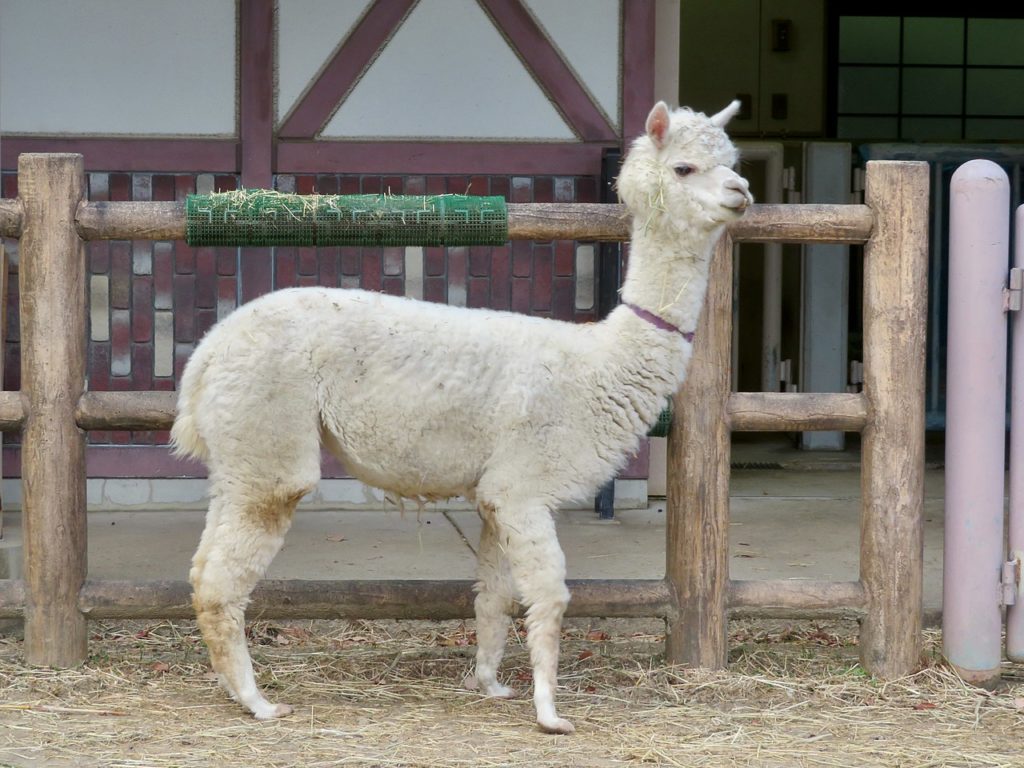
A member of the camelid family, Alpacas also have long necks, the furs around the necks, and their entire bodies are soft, full, thick, and woolly.
This is to keep them very warm in the winter. Initially, alpacas are tree leaves eaters (thanks to their long necks), but these days, they graze on grass instead.
16. Nandu (The Greater Rhea)
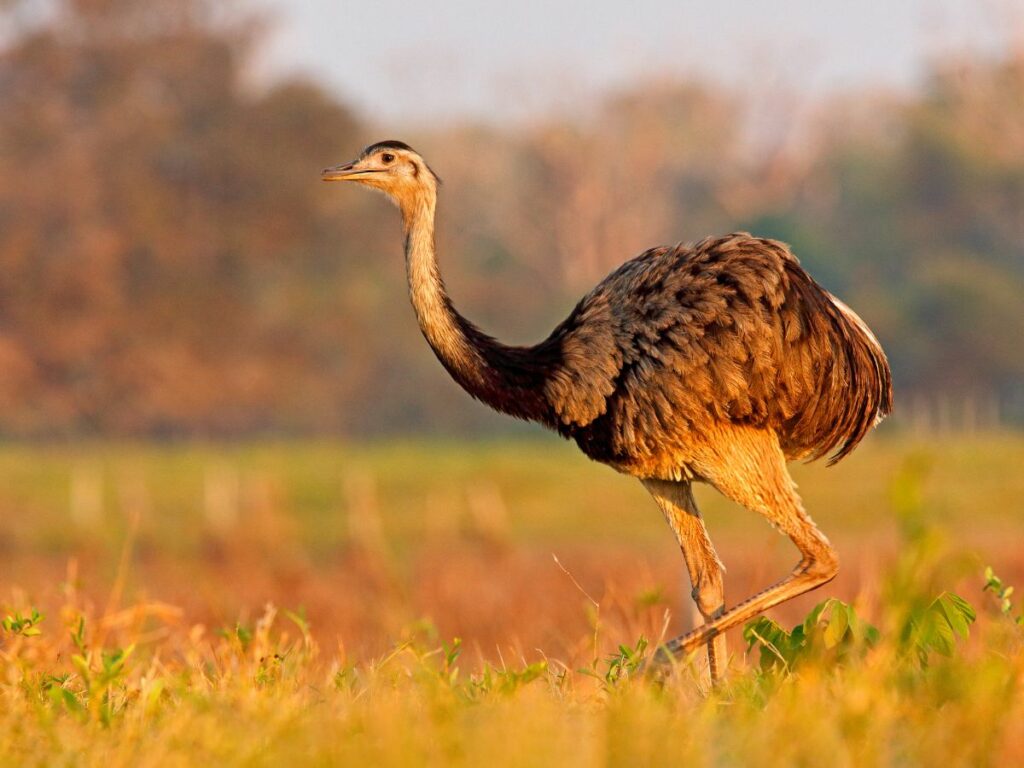
The Greater Rhea, commonly known as the Nandu, is a flightless bird native to South America. Their striking presence comes from their size—they’re the largest bird on the continent, standing up to 5.6 feet tall and weighing up to 40 pounds.
Despite their weight, they’re agile runners. They use their long legs and broad wings for balance, enabling them to change direction quickly. Their long necks also aid balance, and help them spot predators from a distance in their grassland habitats.
The Nandu is notable for its breeding behavior. The males perform elaborate dances to attract females, after which they build nests for the eggs. Surprisingly, it’s the male Nandu who incubates the eggs and takes care of the young. Their nests often contain eggs from multiple females, leading to quite a crowd of young Rheas!
Lastly, the Nandu’s diet is diverse. It includes plant matter, insects, and small vertebrates. This adaptability contributes to its survival in a variety of environments. From a distance, with its long neck and stature, you might mistake a Nandu for an ostrich—but these South American birds are a wonder all their own.
17. Snake-Necked Turtles
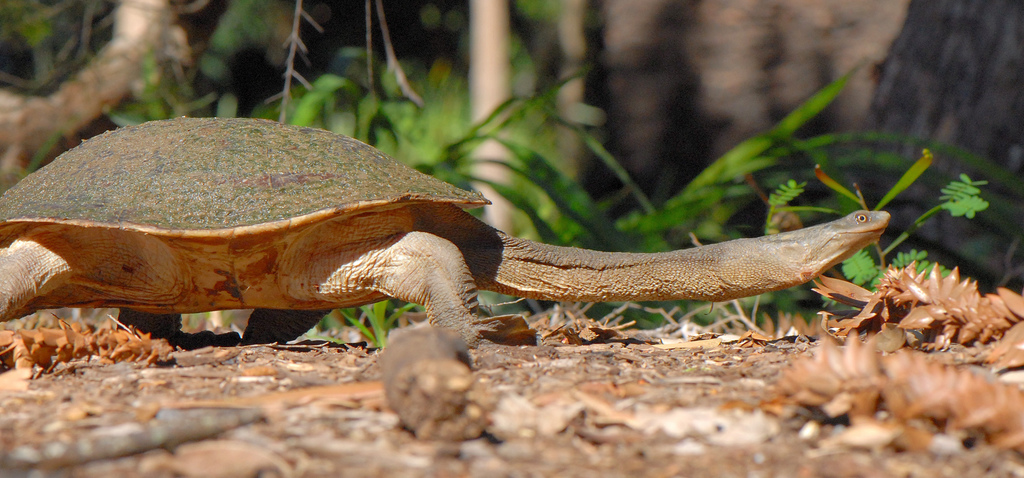
Not the usual turtle you are used to, the snake-necked turtle is mostly found in New Guinea and Australia. This particular species of turtle’s long neck looks similar to that of a snake when raised above water or ground. They adopt the hunting style of snakes and their main meal usually includes crayfish, frogs, tadpoles, and fishes.
18. Scarlet Ibis
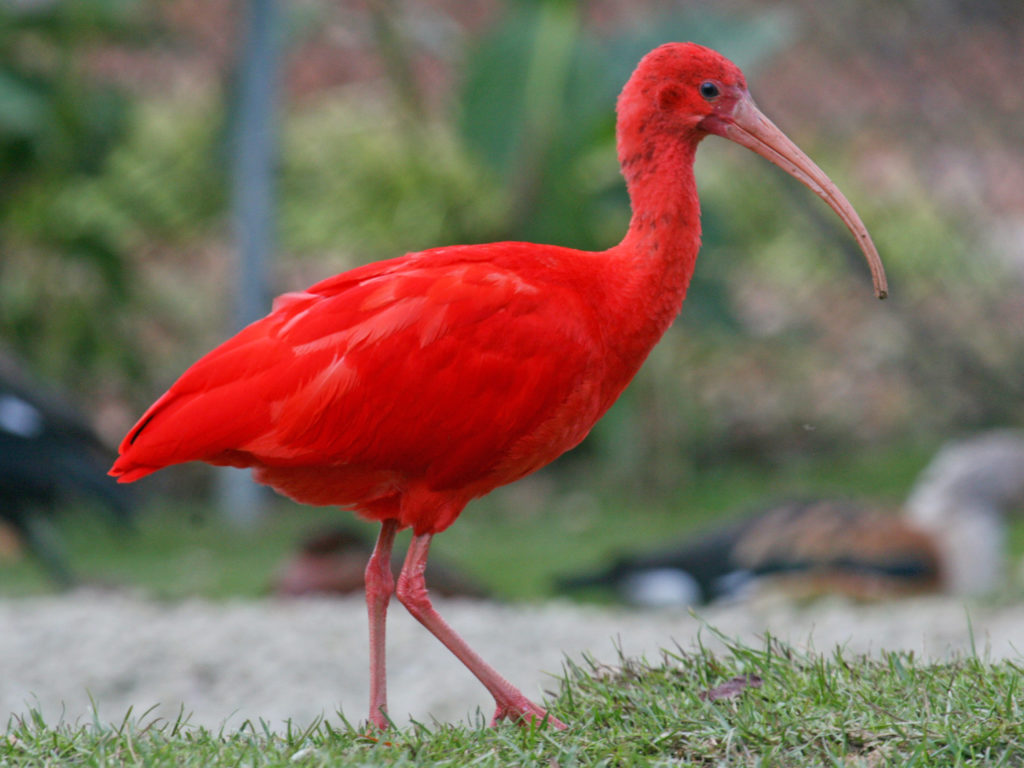
The colorful and magnificent birds most live in South America, their long-necked feature is an advantage to them as it helps them sight preys, their long legs, on the other hand, enable them to move swiftly when they hunt.
19. Okapis
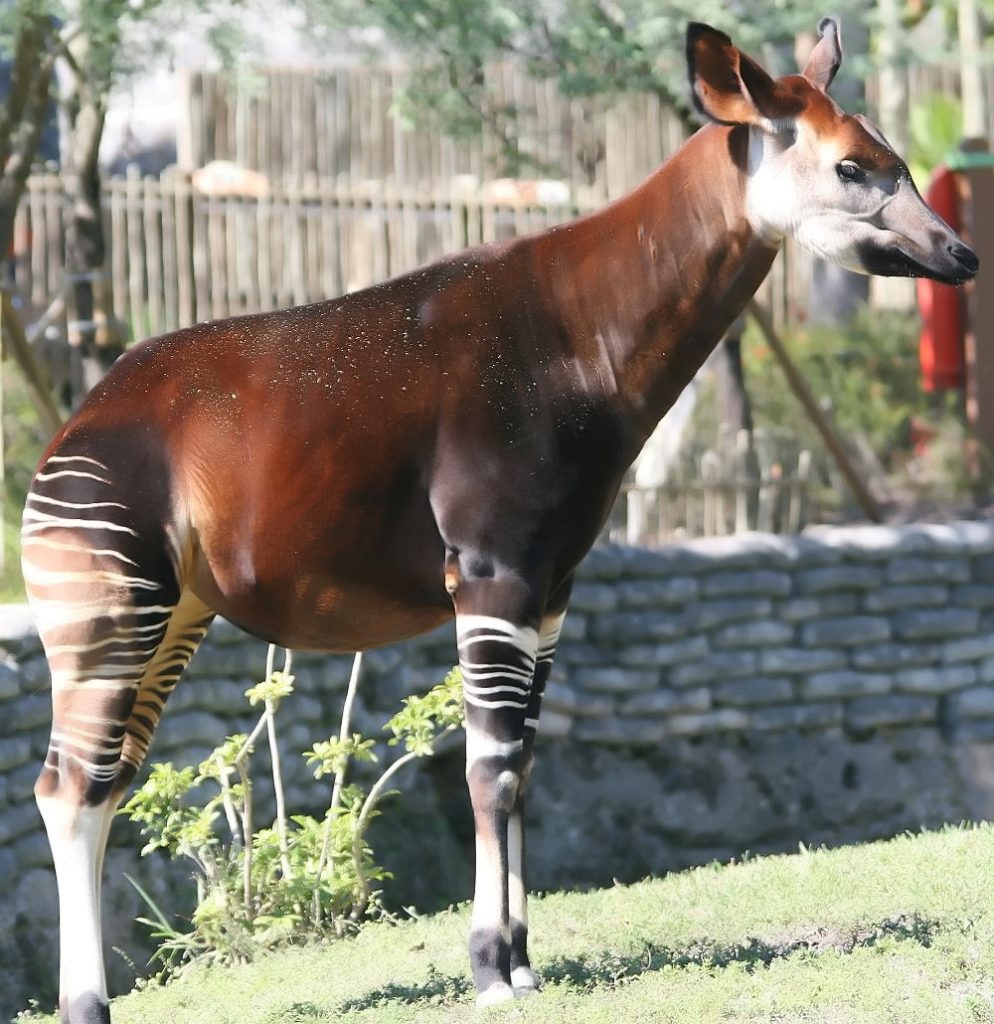
Okapis are herbivorous mammals, otherwise known as Congolese giraffes. These animals share similar features as giraffes. They use their strong necks to defend themselves as well as reach out for leaves on trees.
20. King Vultures
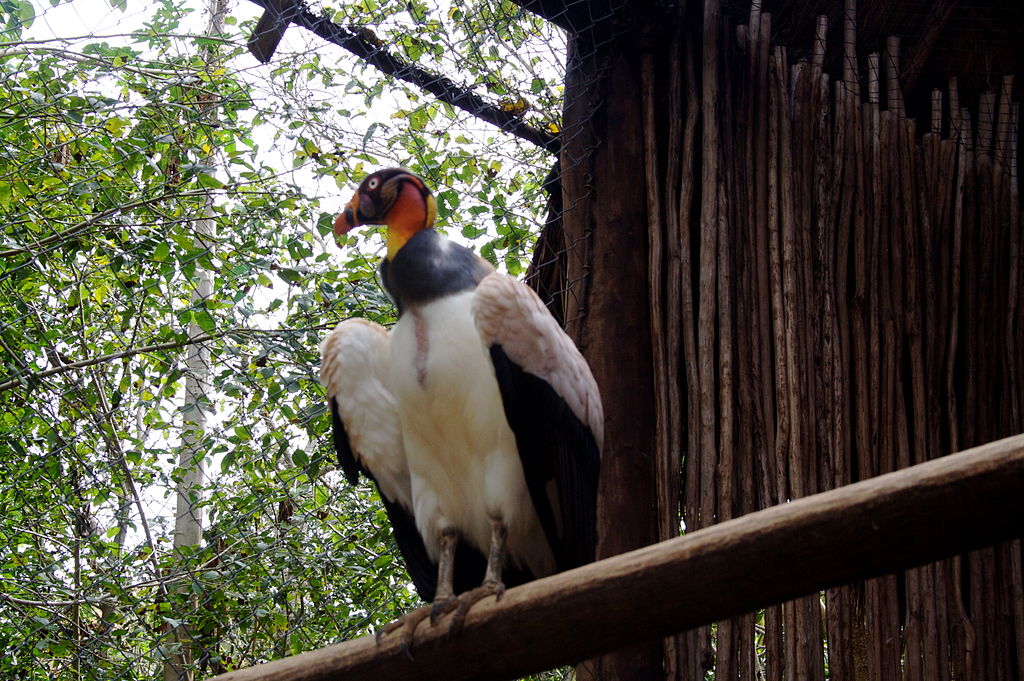
King vulture is a large bird that feeds on carcasses, their long necks have no feathers on them to avoid blood sticking to their neck region. In cold temperatures, the king vulture tucks its neck towards its body to conserve heat.
Unlike other species of vultures, the king vulture stands out with its bald and bare necks which usually have different colors such as red, yellow, blue, orange, and purple
21. Komodo Dragons
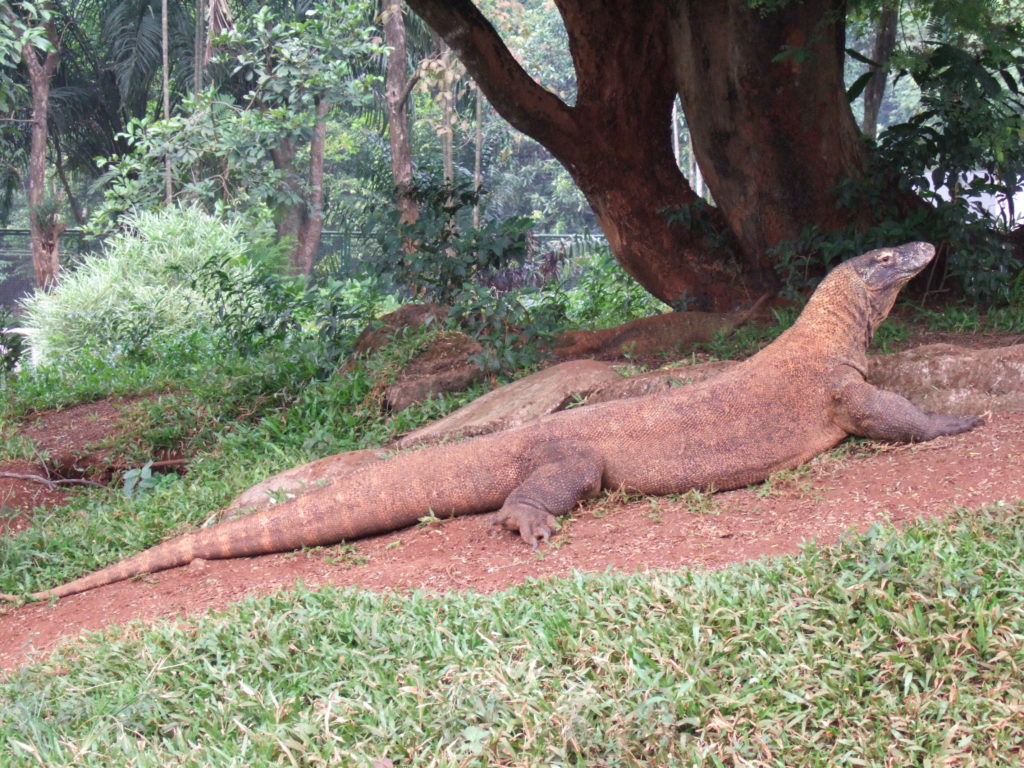
Mostly dominant in Indonesian islands, these venomous lizards are strictly carnivorous. They are one of the largest lizards in the world, their strong and long neck comes to use when they need to pull the flesh off their prey.
22. Herons
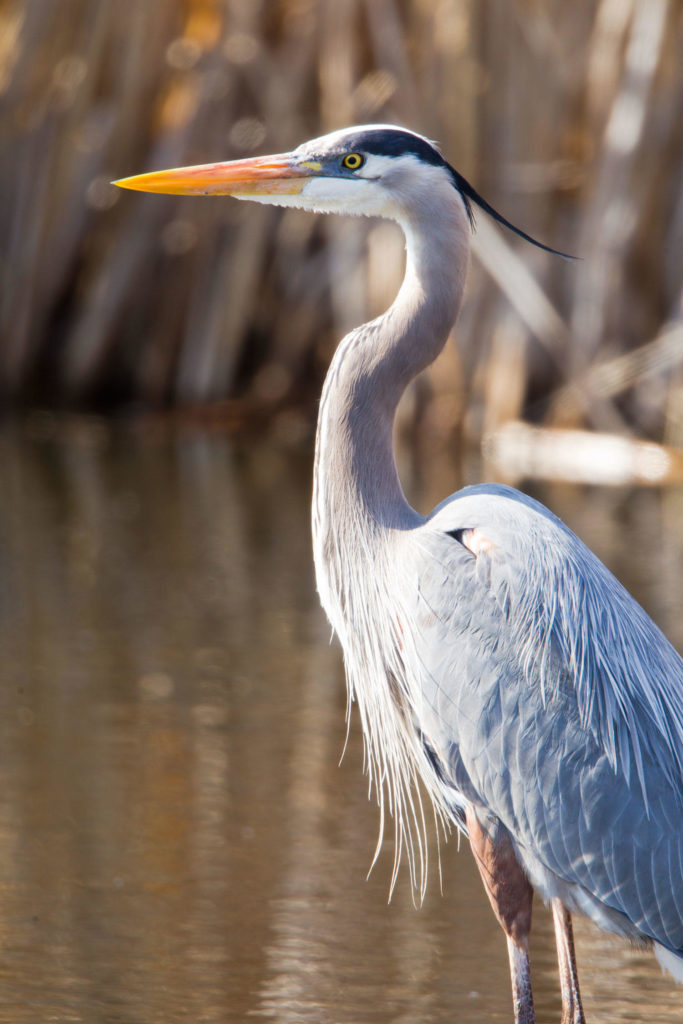
Herons are carnivorous birds with long necks, and like other hunter birds, their long necks are used for a successful kill. Whilst they are swimming for food, the long necks help them observe their surroundings.
Conclusion
These are the 22 animals around the world with long necks. You pretty much now understand how their long necks raise the bar for the animals and give them a higher chance to survive in the wild.
But in some cases, it is what gives them away.




